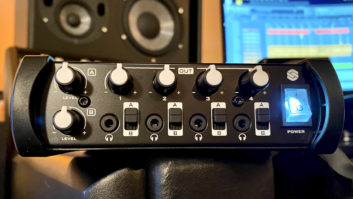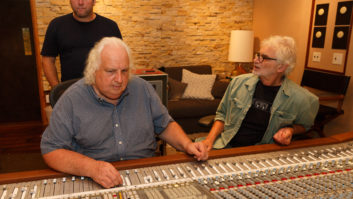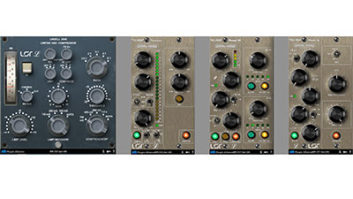Twenty-five years from now, when an executive from one of the BigTwo labels enters the vault to find the masters for a re-release ofBest of the Dixie Chicks, what will she find? Tape, hard disk,magneto-optical, session files? And what about the individual tracks?Will she know what went where on the original mix?
In a two-pronged effort to both preserve our national recordedheritage and provide guidelines for delivery of masters, the Nashvillesection of the Producers & Engineers Wing of the Recording Academyhas created a master document called The Delivery Recommendationsfor Master Recordings. The document first specifies the physicaldeliverables, with the idea that they should be accessible both in theshort and long term. It then provides a glossary of technical terms andrecording technologies, and closes with a call for proper note-takingand labeling, with the inclusion of sample forms.
“This has been in development for more than two years now, butit actually goes back to the MPGA days, when a bunch of us startedtalking about the need for some standards in delivery to labels,”says producer George Massenburg, who with producer Kyle Lehning and asmall group in the Nashville recording community was largelyresponsible for kick-starting the effort. “When the P&E winggot a new director, Leslie Lewis, they started talking with us aboutnarrowing it down for digital delivery and making it industrywide. ButI think that this really could have only started in a place likeNashville, where there is a real sense of community, and producers,engineers, label executives and A&R reps will all sit downtogether.”
While there are issues to be worked out on individual projects, themost emphatic statement is that the committee includes a provision thatall audio tracks be flattened and migrated to the Broadcast .WAV fileformat, including headers and metadata. Also, each master must bedelivered with two backups of the same or greater resolution in twodifferent formats, among which are some existing technologies —SCSI, FireWire drive CD and DVD-R, and AIT tape — as well as somefuture technologies.
“Two years ago, we set out to define a single deliveryformat,” Massenburg says. “But we quickly found that wecouldn’t. Technologies were just advancing too rapidly, and there werestrong opinions from across the industry to open up the format list. Ifyou think about it, two years ago, FireWire wouldn’t have been anacceptable delivery format. Now it is. In the very near future, weexpect Blu-Ray to be on the list.”
Existing analog material will be archived by transferring to atleast 24-bit/96 kHz or, more preferably, DSD to ensure the bestpossible preservation.
To view the document, visit www.grammy.com/pe_wing/DeliveryRecs.pdf. Publiccomment is welcome by e-mailing p&[email protected].
Send Your “Current” News to Sarah Benzuly at [email protected].





